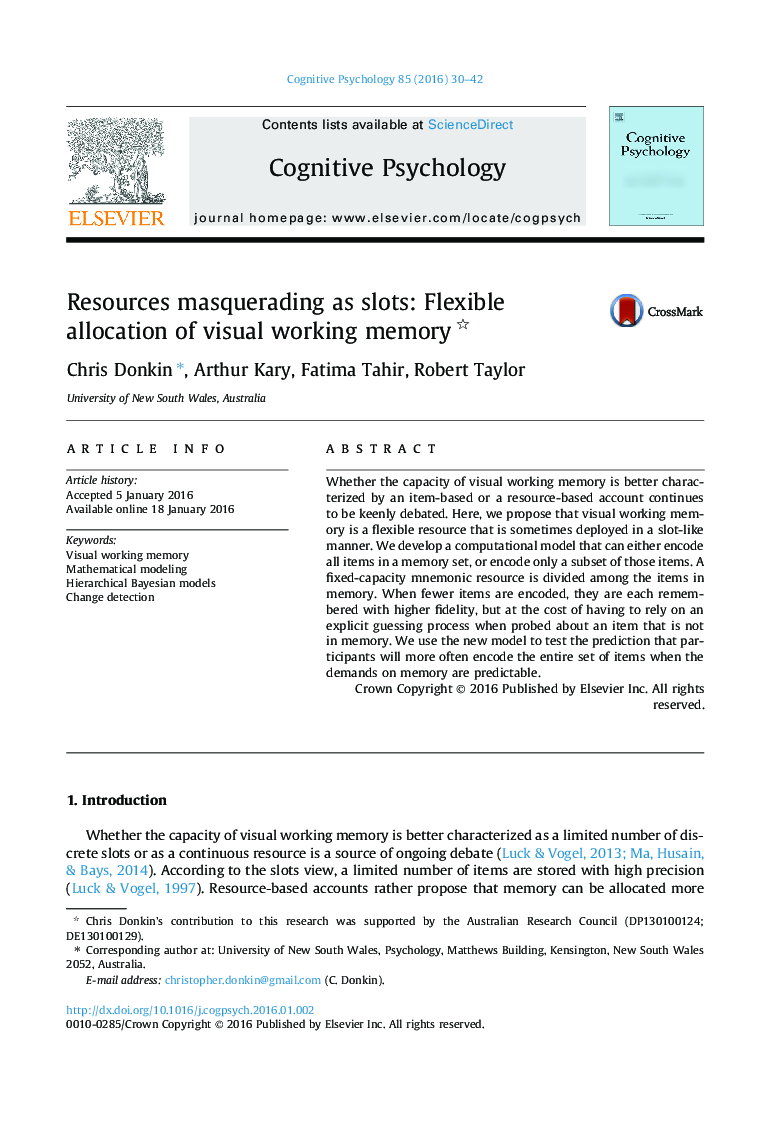| Article ID | Journal | Published Year | Pages | File Type |
|---|---|---|---|---|
| 916809 | Cognitive Psychology | 2016 | 13 Pages |
•We propose a model in which observers encode either all of the items or a subset of items into visual working memory.•We predict that when set size is predictable, observers will more often encode the entire set of memoranda.•We fit our model to 6 experiments simultaneously, and find evidence consistent with our prediction.•We discuss whether and how people can deploy a mixture of strategies for encoding visual items into working memory.
Whether the capacity of visual working memory is better characterized by an item-based or a resource-based account continues to be keenly debated. Here, we propose that visual working memory is a flexible resource that is sometimes deployed in a slot-like manner. We develop a computational model that can either encode all items in a memory set, or encode only a subset of those items. A fixed-capacity mnemonic resource is divided among the items in memory. When fewer items are encoded, they are each remembered with higher fidelity, but at the cost of having to rely on an explicit guessing process when probed about an item that is not in memory. We use the new model to test the prediction that participants will more often encode the entire set of items when the demands on memory are predictable.
